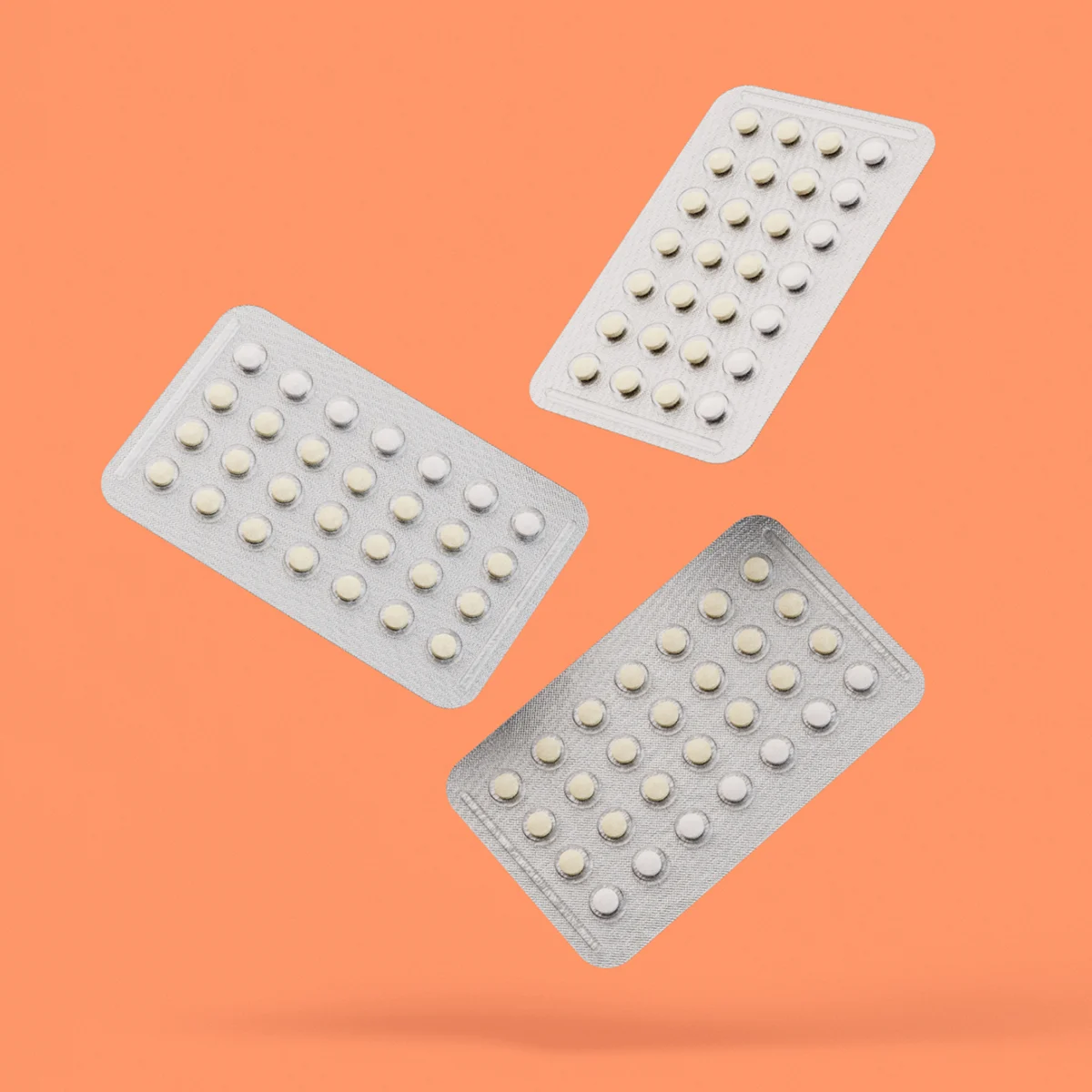Nexplanon: how the birth control arm implant works

Reviewed by Yael Cooperman, MD, Ro,
Written by Linnea Zielinski
last updated: Jul 07, 2021
4 min read
Here's what we'll cover
A pill that you take each day to prevent pregnancy may be a modern miracle to many.
For others, remembering to take a pill at the same time every day is a nightmare. Birth control in the arm—otherwise known as a contraceptive implant—may be a good option for people who can’t or don’t want to take pills daily.
Let’s take a closer look at Nexplanon, how it works, and warnings and side effects you should be aware of.
What is a birth control implant?
Instead of a pill, this type of birth control is a small plastic rod approximately the size of a matchstick. It releases a hormone called progestin in small amounts over three years to prevent pregnancy. The contraceptive implant is sold under the brand name Nexplanon in the United States (FDA, 2018).
A birth control implant is a great option for teenagers, those who have trouble taking pills daily, or people who other birth control methods failed. Keep in mind that how well you use birth control pills (like taking them simultaneously each day) impacts their effectiveness.
The implant lasts for three years, and unlike the pill, does its job continuously without the need for daily reminders.
If you get a contraceptive implant inserted during the first five days of your period (when you’re bleeding), there’s no need for backup methods of contraception. If you get it inserted on any other day, you should use a backup method of contraception like condoms for the first seven days (FDA, 2018).
How is Nexplanon inserted?
As far as procedures go, this one is pretty simple.
Once you’ve made an appointment with your healthcare provider, make sure to eat something beforehand and arrive prepared to give a urine sample. Urine samples are used to test if you’re pregnant; you can't get the implant if you’re pregnant.
Before the insertion, an incision site is made on the inside of your non-dominant arm. It's usually marked on your upper arm about halfway between the underarm and elbow. After cleaning the area, you'll get a small anesthetic injection before the device is inserted. The implant is then inserted just below the skin. Afterward, your healthcare provider will feel around to verify the implant is in the right place (FDA, 2018).
Keep a pressure bandage on the insertion site for 24 hours and then replace it with a small adhesive bandage. You may experience pain, itching, or bruising where the implant was inserted, but that should resolve quickly (FDA, 2018).
Getting birth control in your arm is also easily reversible if you no longer want it. You can go to a healthcare provider, get it removed, and try for pregnancy as early as your next cycle if you want. If you decide to continue with Nexplanon after three years, the old one is removed and replaced with a new implant.
Benefits of birth control in the arm
The contraceptive implant is one of the easiest forms of birth control to use since it works continuously for three years and is effective almost as soon as it’s placed.
It’s considered as effective as other forms of birth control, including intrauterine devices (IUDs). Less than 1% of people using long-acting birth control devices like these get pregnant each year (Bansode, 2020).
Birth control implants may also help control painful symptoms associated with endometriosis. Several studies have found that the contraceptive implant improved pelvic pain, sexual function, and quality of life in people living with endometriosis (Carvalho, 2018; Sansone, 2018).
Side effects and risks
Like any contraceptive, Nexplanon isn’t without side effects. The most common ones include (FDA, 2018):
Changes to your menstrual bleeding pattern
Headache
Weight gain
Sore throat
Breast pain
Acne
Abdominal pain
Mood swings, dizziness, and nausea have also been reported but are less common.
One of the biggest risks with this type of birth control is blood clots. People who are prone to blood clots should not use the contraceptive implant. Blood clots typically form in the legs but can move to the lungs, which can trigger a deadly condition called pulmonary embolism (FDA, 2018).
Compared to other forms of hormonal birth control, the arm implant has a lower risk for blood clots (Keenan, 2018). Still, it’s important to share your complete medical history with your healthcare provider to ensure that you use the safest birth control option.
Non-hormonal birth control options
If you can’t use hormonal contraceptives like the birth control implant, don’t worry—you still have lots of options.
There are non-hormonal IUDs that use copper instead of hormones to prevent pregnancy. This form of birth control is a small, T-shaped device that’s inserted into your cervix by a healthcare professional. Although it’s hormone-free, the copper IUD makes the uterus an inhospitable place for a fertilized egg, taking baby-making off the table (Friedman, 2019).
Don’t write off condoms, either. Condoms are very effective at preventing pregnancy (especially when used with spermicide) and preventing most sexually transmitted infections (STIs) when used properly. It’s important to note the copper IUD doesn’t protect against STIs.
Birth control in the arm is a good option for people who want a reliable form of contraception, but who can’t use birth control pills consistently. As we’ve noted, it’s extremely effective at preventing pregnancy, although it does come with side effects.
Even if you can’t use the contraceptive implant, there are plenty of birth control methods available. Speak with a healthcare provider about which birth control option is best for you.
DISCLAIMER
If you have any medical questions or concerns, please talk to your healthcare provider. The articles on Health Guide are underpinned by peer-reviewed research and information drawn from medical societies and governmental agencies. However, they are not a substitute for professional medical advice, diagnosis, or treatment.
Bansode, O.M., Sarao, M.S., & Cooper, D.B. (2020). Contraception . StatPearls Publishing. Treasure Island, FL. Retrieved from https://www.ncbi.nlm.nih.gov/books/NBK536949/
Carvalho, N., Margatho, D., Cursino, K., Benetti-Pinto, C. L., & Bahamondes, L. (2018). Control of endometriosis-associated pain with etonogestrel-releasing contraceptive implant and 52-mg levonorgestrel-releasing intrauterine system: randomized clinical trial. Fertility and Sterility, 110 (6), 1129–1136. doi: 10.1016/j.fertnstert.2018.07.003. Retrieved from https://www.sciencedirect.com/science/article/abs/pii/S0015028218305685
U.S. Food and Drug Administration (FDA). (2018, October). NEXPLANON (etonogestrel) Label . Retrieved from https://www.accessdata.fda.gov/drugsatfda_docs/label/2019/021529s018lbl.pdf .
Friedman, J., & Oluronbi, R. A. (2019). Types of IUDs and Mechanism of Action. In: Coles M., Mays A. (eds) Optimizing IUD Delivery for Adolescents and Young Adults . Springer, Cham. doi: 10.1007/978-3-030-17816-1_3. Retrieved from https://link.springer.com/chapter/10.1007/978-3-030-17816-1_3
Holmes, K. K., Levine, R., & Weaver, M. (2004). Effectiveness of condoms in preventing sexually transmitted infections. Bulletin of the World Health Organization, 82 (6), 454–461. Retrieved from https://www.ncbi.nlm.nih.gov/pmc/articles/PMC2622864/
Keenan, L., Kerr, T., Duane, M., & Van Gundy, K. (2018). Systematic Review of Hormonal Contraception and Risk of Venous Thrombosis. The Linacre Quarterly, 85 (4), 470–477. doi: 10.1177/0024363918816683. Retrieved from https://www.ncbi.nlm.nih.gov/pmc/articles/PMC6322116/
Sansone, A., De Rosa, N., Giampaolino, P., Guida, M., Laganà, A. S., & Di Carlo, C. (2018). Effects of etonogestrel implant on quality of life, sexual function, and pelvic pain in women suffering from endometriosis: results from a multicenter, prospective, observational study. Archives of Gynecology and Obstetrics, 298 (4), 731–736. doi: 10.1007/s00404-018-4851-0. Retrieved from https://link.springer.com/article/10.1007/s00404-018-4851-0










